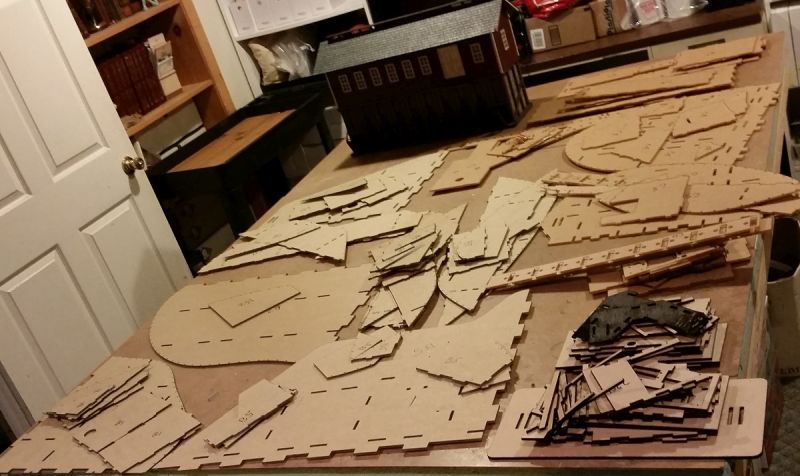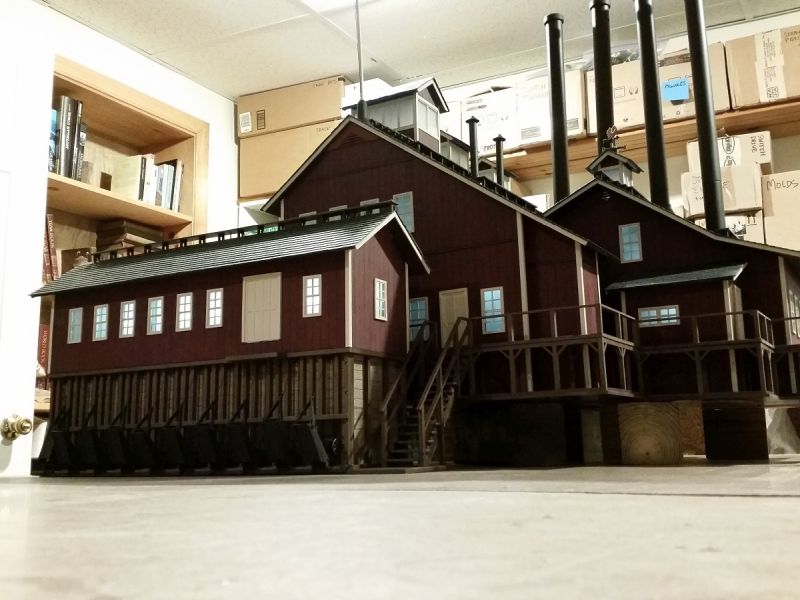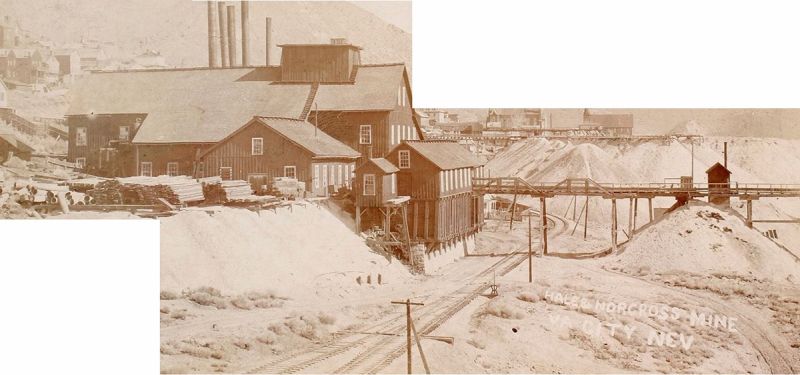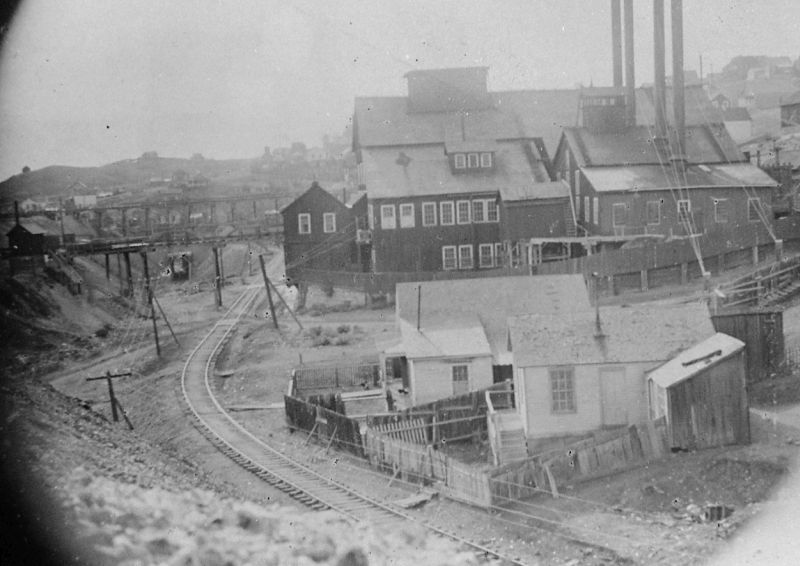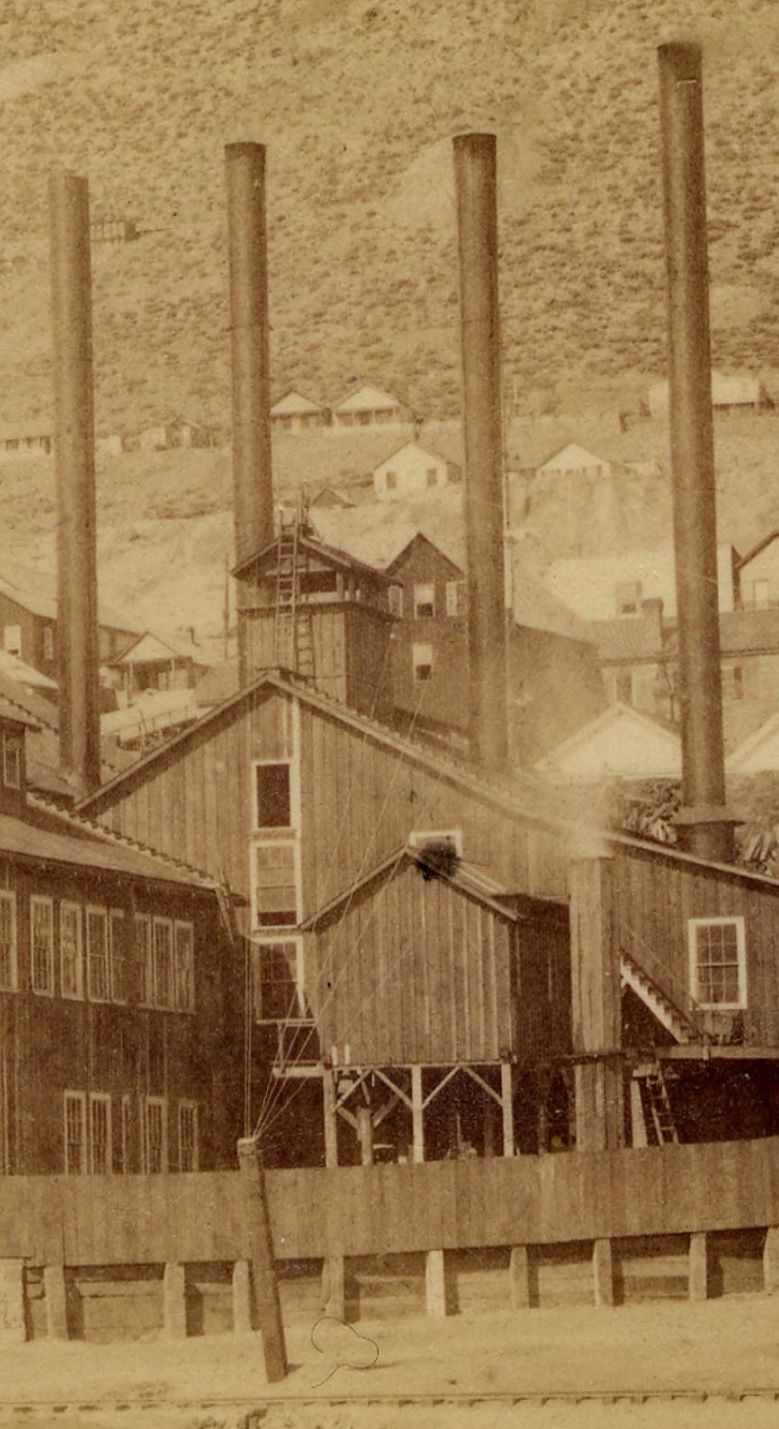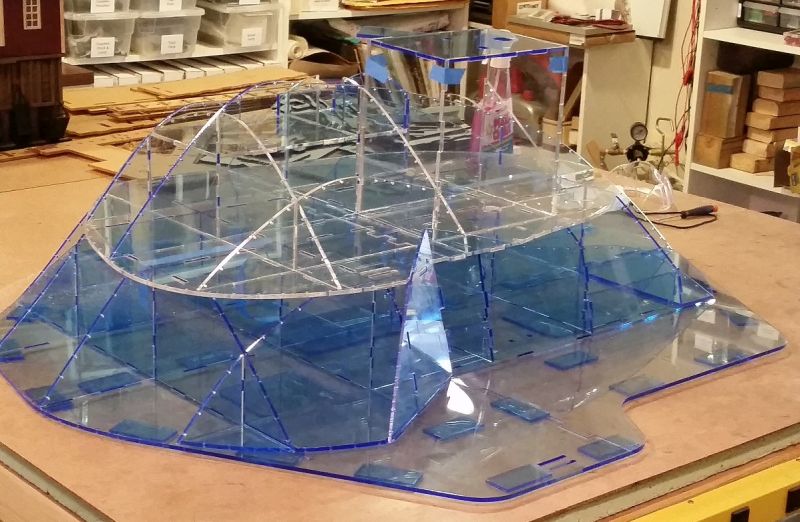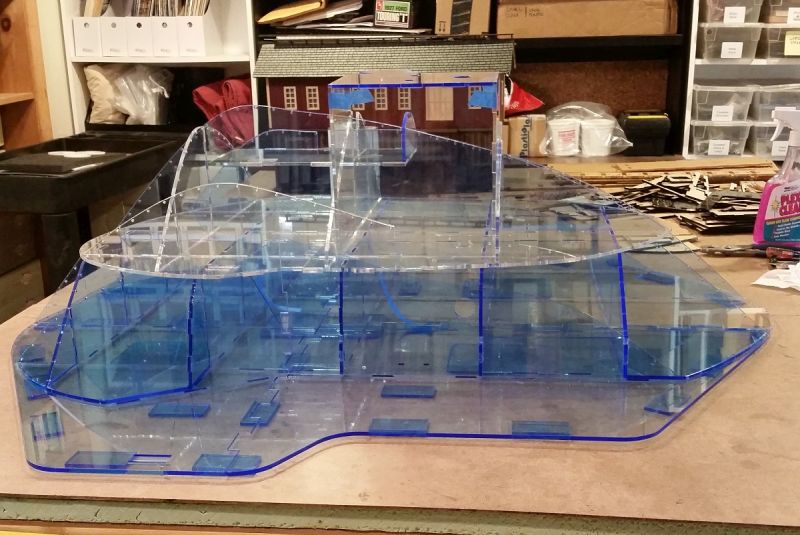Hi Dan, thanks! Actually, putting the puzzle together is the fun part… as long as the pieces were designed properly, haha! There will be the usual percentage of oversights (a tab on one part that doesn’t have it’s mating slot on another, for example). If it’s a major oversight, I’ll recut the part. But other than that, it’s glue and dremel time! And you bet, I’ll be posting, thanks for viewing.
Sean, I’m pretty sure it’s still out there. The main structure is ready to plant, but I’ll keep the ore bin inside as I built the trestle that goes into it. Not sure about time frame, but thanks for your patience.
Rooster, we’re probably hittin the same stuff. At least, your point about the telegraph lines triggered my thoughts, and now those of a couple others. I wrote up a series of questions for the V&T RR Historical Society forum:
Greetings all,
Here’s a few questions about actual telegraphs, ca. the late 1880’s. This is brought on by a friend who said I should be showing telegraph wires strung into my H&N mine model. I said I didn’t think they’d have that, but promised I’d ask the experts. So here goes.
Since a number of photos show the telegraph lines alongside the V&T track, was there a formal business relationship between the provider (Western Union, right?) and the V&T? Would seem to make sense, because V&T would get the TG access they need, and WU the maintenance access they need.
Did all telegraph messages go over a single wire, in series? Or did they have multiple lines for parallel messaging?
Where were the telegraph offices? Only at V&T depots? Dedicated establishments? Other places?
And finally: did major mines have their own telegraph capabilities?
Thanks for your insights,
Cliff
Here’s the one response I got thus far:
Cliff,
WU and the railroads had a close association … WU usually constructed the lines in exchange for using the right of way … often they provided the instruments, also. The other big player was Postal Telegraph, but they didn’t mesh with the rail lines. The railroad companies got to use the tgh lines in exchange for use of the right of way.
A typical railroad depot would have at least two lines, and in some cases, dozens. There would be a Dispatcher’s Line and a message line, which might often also carry WU telegrams. Busy mainlines might have dozens of lines, not all of which would be used at the depot.
Big cities would probably also have a separate WU office downtown. and private businesses might also have telegraph services.
Now, I am not a real student of the V&T, but yes, a large mining company might have their own connection to WU. Probably only a single wire (ground returns were used in telegraph circuits.) If there are two or more wires on the mining company grounds much after 1910 or so, it was likely a telephone line, rather than telegraph. The company wouldn’t want to pay a telegraph operator when a phone might do. Outside of the number of wires, however, there would be no real physical difference between tgh and phone lines, so running a couple wires into the mining company office would be a good feature. Power lines look different than comm lines, however.
Skip Luke
Retired Telegrapher and Dispatcher
Member of the Morse Telegraph Club
Pretty cool, huh? As to whether the H&N had its own telegraph line, I just received a private EM from the former Society director, which said that in the 1890’s this wouldn’t have been likely. He asked what photo I saw the connecting wires in, and I had to say I hadn’t seen them… But, neat thing is that the Director said these questions got his brain going, and today he’s written a 2-page article.
So keep at it Rooster. And what are you drinking, if I might ask?
(http://www.largescalecentral.com/externals/tinymce/plugins/emoticons/img/smiley-laughing.gif)
